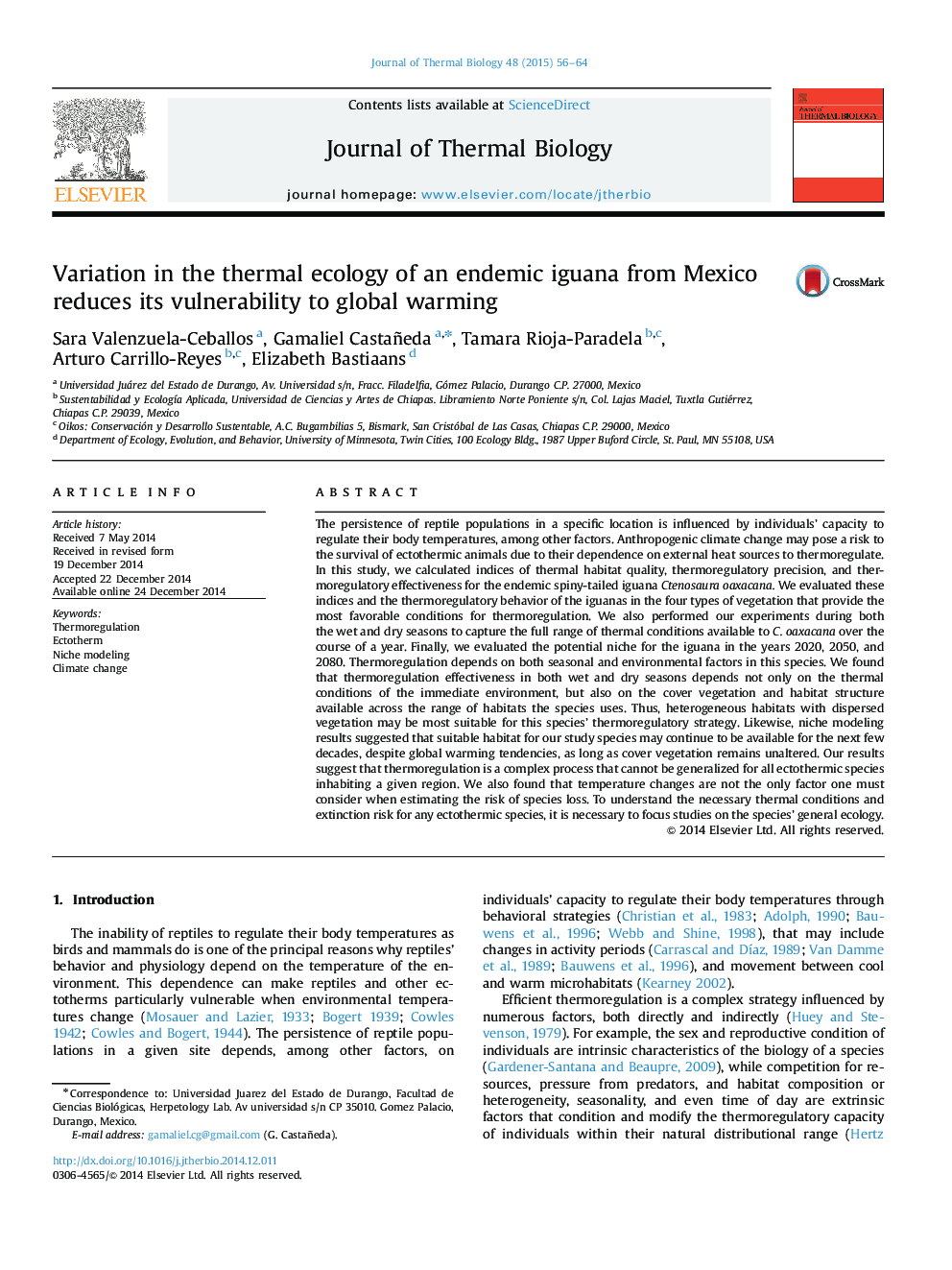| کد مقاله | کد نشریه | سال انتشار | مقاله انگلیسی | نسخه تمام متن |
|---|---|---|---|---|
| 2842851 | 1571097 | 2015 | 9 صفحه PDF | دانلود رایگان |
• Thermoregulation of C. oaxacana varies among vegetation associations and among seasons.
• The thermoregulation of C. oaxacana distinguished it as a tolerant species to thermal changes.
• The habitat will be thermally suitable in the coming decades despite temperatures predicted.
The persistence of reptile populations in a specific location is influenced by individuals’ capacity to regulate their body temperatures, among other factors. Anthropogenic climate change may pose a risk to the survival of ectothermic animals due to their dependence on external heat sources to thermoregulate. In this study, we calculated indices of thermal habitat quality, thermoregulatory precision, and thermoregulatory effectiveness for the endemic spiny-tailed iguana Ctenosaura oaxacana. We evaluated these indices and the thermoregulatory behavior of the iguanas in the four types of vegetation that provide the most favorable conditions for thermoregulation. We also performed our experiments during both the wet and dry seasons to capture the full range of thermal conditions available to C. oaxacana over the course of a year. Finally, we evaluated the potential niche for the iguana in the years 2020, 2050, and 2080. Thermoregulation depends on both seasonal and environmental factors in this species. We found that thermoregulation effectiveness in both wet and dry seasons depends not only on the thermal conditions of the immediate environment, but also on the cover vegetation and habitat structure available across the range of habitats the species uses. Thus, heterogeneous habitats with dispersed vegetation may be most suitable for this species’ thermoregulatory strategy. Likewise, niche modeling results suggested that suitable habitat for our study species may continue to be available for the next few decades, despite global warming tendencies, as long as cover vegetation remains unaltered. Our results suggest that thermoregulation is a complex process that cannot be generalized for all ectothermic species inhabiting a given region. We also found that temperature changes are not the only factor one must consider when estimating the risk of species loss. To understand the necessary thermal conditions and extinction risk for any ectothermic species, it is necessary to focus studies on the species’ general ecology.
Journal: Journal of Thermal Biology - Volume 48, February 2015, Pages 56–64
